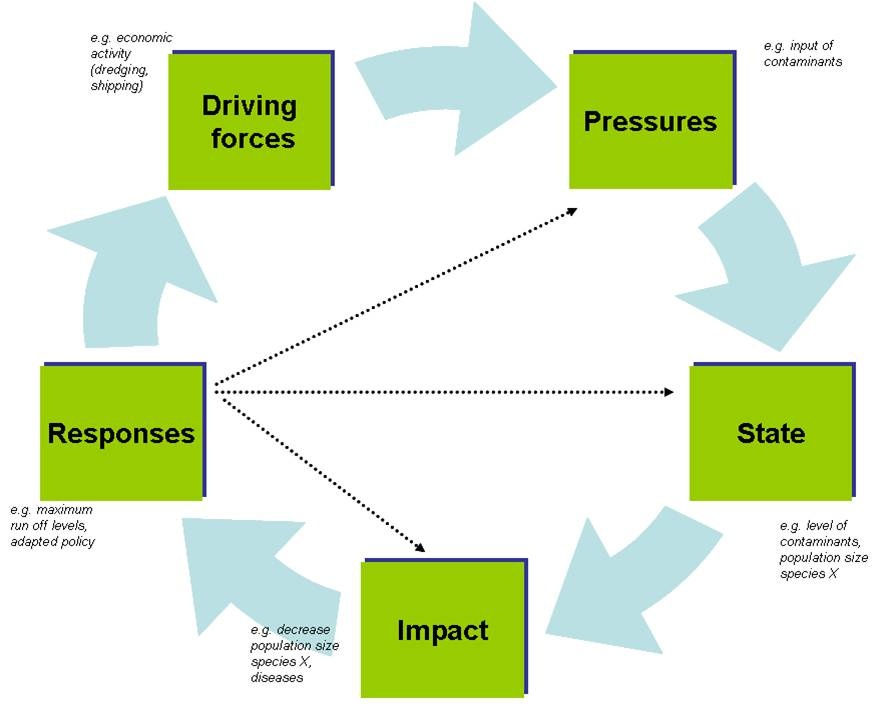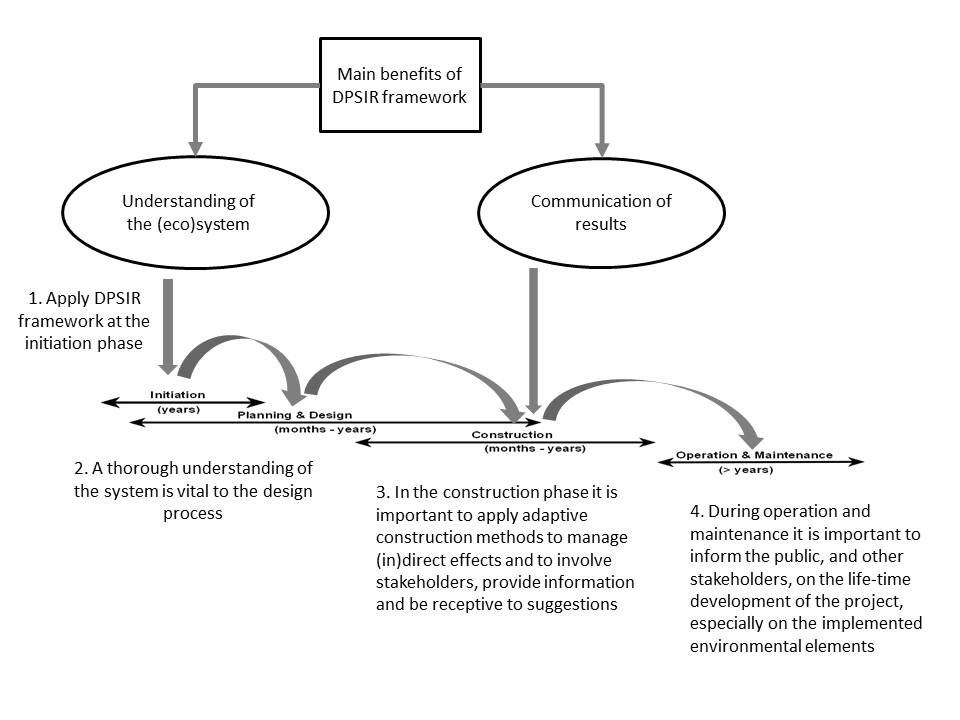About
DPSIR has been developed by OECD, the Organisation for Economic Cooperation and Development (OECD, 1993). The DPSIR framework helps to design environmental assessments, to identify indicators, and to communicate results. It can be applied by a wide range of different users. A thorough understanding of the system is vital to the design process of BwN projects. DPSIR has provided the basis for national and international initiatives and is commonly used by the European Environment Agency in the execution of integrated environmental risk assessment studies. It is used to integrate socio economic and ecological processes to understand the forces that drive patterns of ecosystem changes (e.g. EEA, 1999).

DPSIR and project phases

This tool has proven to provide a basis for identifying the main activities (drivers), pressures, state descriptors, impacts and responses, and for visualising causal chains. It is possible to use the DPSIR framework within all phases of a project:
Initiation phase Ideally, DPSIR should be applied early in the project, i.e. in the initiation phase, because this is where it will be the most effective. The goal of BwN-involvement in this phase is to guarantee that scoping goes beyond sectoral interests and limited problem perceptions, focusing on opportunities and win-win solutions. During this phase sufficient insight into the functioning of the system needs to be achieved, including the identification of functional links between the project aims, the ecosystem, related stakes and the economy. DPSIR can be used to bring socio-economic and ecological aspects together in order to understand the forces that drive ecosystem changes.
Planning and design A thorough understanding of the system (complete mapping of D, P and S) is vital to the design process, in which impact estimates play a crucial role.
Construction In the construction phase it is possible to apply adaptive construction methods in order to manage direct (and if possible indirect) effects of the works and to involve stakeholders, provide information and be receptive to suggestions. The DPSIR framework provides support to both. Insight into the Impact and Response are particularly important here.
Operation and maintenance During the operation and maintenance phase it is important to inform the public, and other stakeholders, on the life-time development of the project, especially on the implemented environmental aspects. Clear information, e.g. through modern media, will add to the perception and potentially to the use of the project and its integration in society. Here, too, the DPSIR framework provides support to both.
Decommissioning Decommissioning phase can be regarded as a “driver” or activity within a project. In this respect, the specific DPSIR usage as described in the prior phases (describes above) can be taken into account within the decommissioning phase. Thus, as visualised in the above figure, applying the DPSIR framework in the early stages of a project will benefit the whole project.
